Motorola Droid X2 Review - A Droid X with Tegra 2
by Brian Klug on July 7, 2011 8:31 AM ESTThe X2 also appears to be outfitted with a slightly darker grey shell than the original X. Alongside the X which I borrowed, the X2 looks almost black. It’s hard to say whether that’s just because his X has faded considerably, or whether the X2 has been intentionally made darker so people can tell the two apart. It’s probably a subtle thing similar to the way Apple made logos chrome between the 3G and 3GS to differentiate the two.
The other obvious way to differentiate which one is which is by looking at the back cover. The X2 has its name in red written below the metallic Motorola logo on the battery door. Otherwise even the two battery doors are identical. The trademark thickness bulge where the camera is located also persists on the X2. This is one area that I think could have benefited from some slimming, although it’s physically impossible to reduce the throw (depth) of some camera systems.
Button placement on the X2 is likewise the same as the X. At the top is power, centered and raised slightly. Just offset from it is the headset jack and then a microphone for noise cancellation on calls.
On the right side is the volume rocker which is identical to the one on the X. It’s a solid piece of plastic with a small detent in the center. The buttons are still sufficiently clicky. Of course, at the very bottom of the right side is where the two-step camera button would have been, should Motorola have decided it was worth keeping.
The bottom has a small lip with the same physical, backlit Android buttons. Thankfully these are in the same order as they were on the X, so there’s no relearning if you’re upgrading. Dead center below buttons is the primary microphone for calls, just like before.
The left side of the X2 is still home to microUSB and a microHDMI port. Back when we reviewed the X, I was disappointed with how HDMI was implemented. You could output certain types of media to the TV, but not do full mirroring. Instead, the display turned into a small control panel, and the attached HDMI monitor became the playback canvas. It felt half-baked back then.
This time, you can do full mirroring with overscan control. What’s odd, however, is that rotation isn’t implemented like it was on the Optimus 2X.
Plug an HDMI monitor in, and the whole interface rotates to landscape and stays there. If you have an application which only has portrait support, it will appear rotated 90 degrees on the TV, instead of rotating properly like the LG Optimus 2X does.
The phone’s display is upscaled to 1080p using what looks like nearest neighbor, so things are blocky, but it works.
Proximity sensor and the notification LED are still hidden in the black strips up near the earpiece. Again, it wouldn’t surprise me if all of this was exactly the same as it was on the original X just because of how virtually nothing is physically different on the outside of the X2. I guess that actually sums up what there is to say about the exterior - if you liked the angular and masculine aesthetics of the original X, you’ll like the X2 because it’s essentially the same thing. Similarly, if you disliked the way the X looked, you’ll dislike the X2.


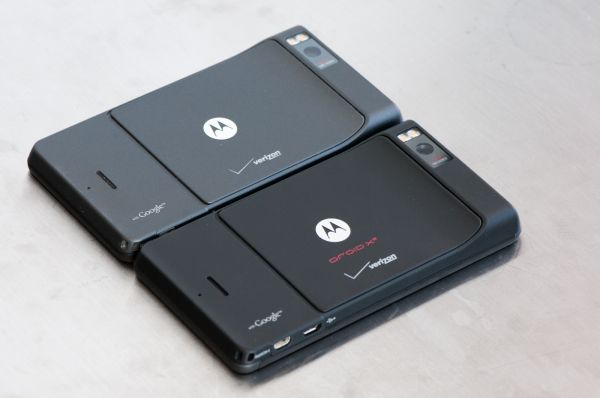
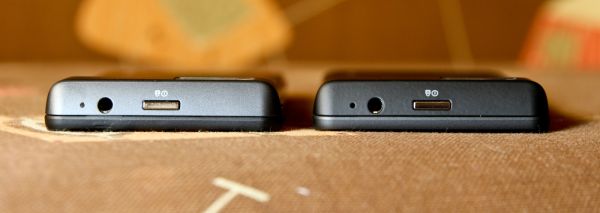
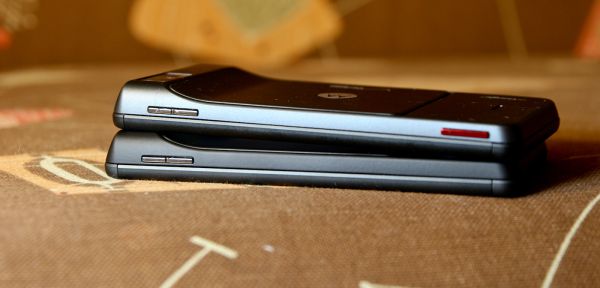
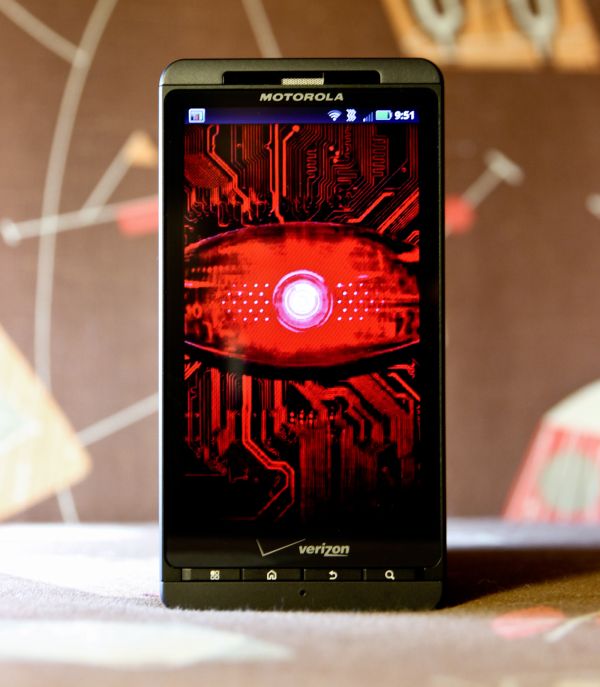
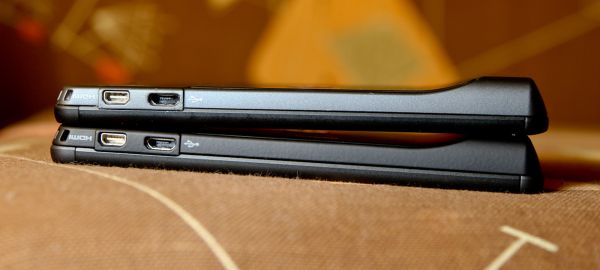
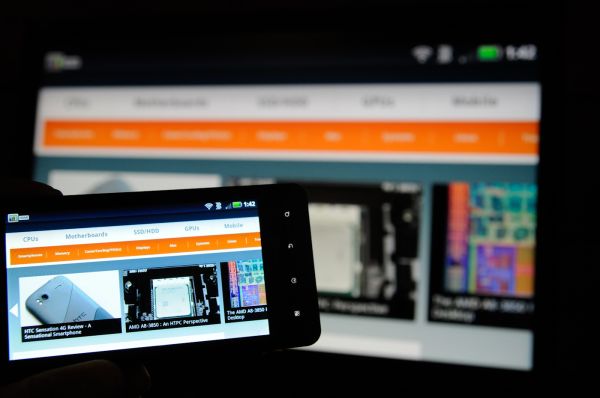
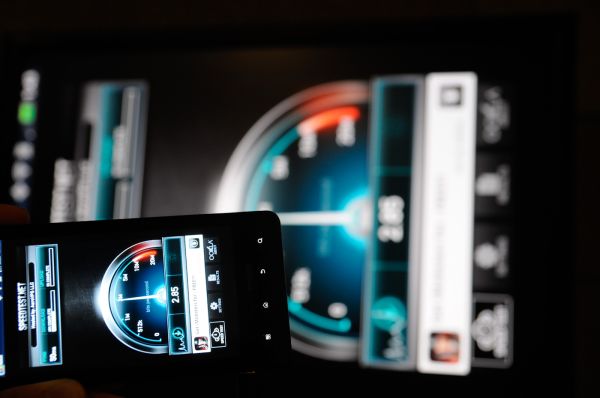
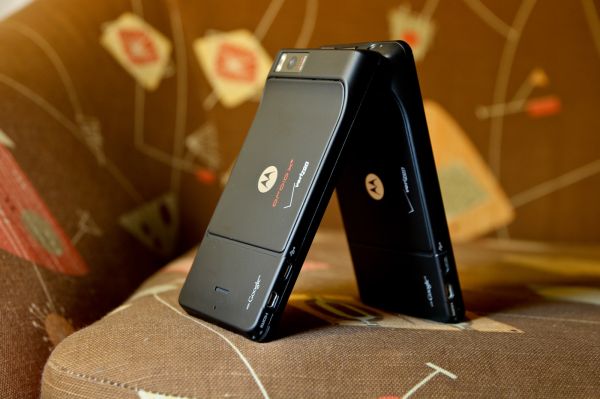














72 Comments
View All Comments
NeoteriX - Thursday, July 7, 2011 - link
Again, the N8 is an unfair comparison, it's not even the same class of camera phone. Just like the other examples I cited, the Sony C-902, Nokia N82... these are cameras that happen to also be phones. The problem is that these are not apples to apples comparisons.The sensor on the N8 is 1/1.83″ -- by way of comparison, the Canon S95, a real point and shoot camera with very well-respected low light performance relative to its peers has only a slightly larger sensor of 1/1.7" Not to mention it has carl zeiss branded optics and a xenon flash (like the other examples I cited)
The iPhone 4 uses a mobile camera sensor of 1/3.2" and so does the HTC sensation.
Now I'm all for big sensors in cameraphones--the better the image quality the better, as the best camera is ultimately the one you take with you. And the N8 shows that you can shove real point and shoot sensors into a phone, but let's face the reality -- the market of phones with REAL camera sensors and optics is a very, very, very small niche market (they cost $$$ to put in those sensors) and doesn't reflect the mass market of advanced smartphones.
Again, the iPhone 4 represents the best candidate of this balance, and I'm really hoping others HTC, Motorola, etc. step up their game here, but I don't plan on owning an Apple device in the near future.
munky - Thursday, July 7, 2011 - link
It's a valid comparison, the N8 is a smartphone like all the others you mentioned, in the same form factor. I'm not comparing something the size of a DSLR to something that fits in your pocket.Yes, it has a bigger sensor, just like the S95 has a bigger sensor than average pocket cameras - does that mean the S95 is not qualified to be the gold standard of pocket cameras? Doing so is just a refusal to acknowledge a superior product in favor of the lowest common denominator.
NeoteriX - Thursday, July 7, 2011 - link
I agree, but I think the distinguishing factor is that the S95 performs better than anything in its class by any dimension.The large sensor camera phones are still a "niche" in the sense that you have to singularly want exceptional photographic performance to buy one of these phones -- and in return, you have to make several compromises as to the user interface, CPU performance/technology, software ecosystem, etc. The phones are geared towards an audience willing to deal with that.
However, if you look at the other major powers in the phone OS ecosystems (iOS, Win7, Android, WebOS?), none incorporate the large sensor into any phone, much less the kind of flagship phone that you would expect them to pull all the stops out for.
Believe me when I say I would go out and immediately buy the first Android phone with all the furnishings -- dualcore CPU, etc. that *also* included a large sensor and quality glass.
Exodite - Thursday, July 7, 2011 - link
That's a bit of a red herring considering that the vast majority of these so-called 'camera phones' aren't lacking in other desirable features.Indeed, a good camera is becoming something of a hallmark of high-end smartphones in general, HTC being the exception to the rule.
As for the cost you mentioned before, the N8 - undeniably the best-equipped smartphone today when the camera is concerned - is a mid-range phone.
Brian Klug - Thursday, July 7, 2011 - link
I'm a huge optics nerd (it's what I studied in college at least) so I always try and find out everything I can about the cameras in here. Usually that ends up being very little because it either isn't documented, or there's no information in the place I look.For the sensor type, it's easy enough to just run dmesg and scan through there. HTC lately has been initializing the camera and leaving the part number right there. I searched through on the X2 and couldn't find any camera sensor part numbers even in the sections where they're clearly starting to init the camera. It's unfortunate, because otherwise we could get a better feel for what sensors are usually very good and which ones usually aren't.
It's interesting that Apple did such a good job marketing backside illumination with the iPhone 4, when essentially every sensor at or over 8 MP needs to be backside illuminated (and thinned) due to skew effects. That said their camera is indeed very good.
-Brian
jamyryals - Thursday, July 7, 2011 - link
Love the video review format. My favorite smart phone reviewer on the net, keep it up Brian.munky - Thursday, July 7, 2011 - link
Why do the graphs always compare the usual Samsung and Motorolla phones, the old practically irrelevant iphone 3gs, Nexus One and Dell Streak, but not more variety of modern phones, like the Nokia N8, for example? Instead of grouping tablets and phones in the same graphs, separate the two categories so that each one has a better selection of relevant entries.Exodite - Thursday, July 7, 2011 - link
Regarding Motorala and their use of FWVGA over WVGA, they're not the only Android handset manufacturer who went that route as Sony-Ericsson also uses FWVGA on the X10/arc/neo/play.BryanC - Thursday, July 7, 2011 - link
I might consider buying this phone if not for the terrible pentile screen door effect, which is simply unacceptable in today's day and age.The iPhone4 has 960x640x3 subpixels in 5.65in2 area. The Droid X2 has 960x540x2 subpixels in 7.90in2 area. The iPhone has 2.5X the subpixel density of the Droid X2! And it's immediately obvious when you look at the displays - the iPhone4 display is so detailed the image looks printed on, it's in a completely different class.
Too bad.
JayQ330 - Thursday, September 1, 2011 - link
what does that have to do with any of this? oh i see, wipe your chin there's still some iphone honey left.